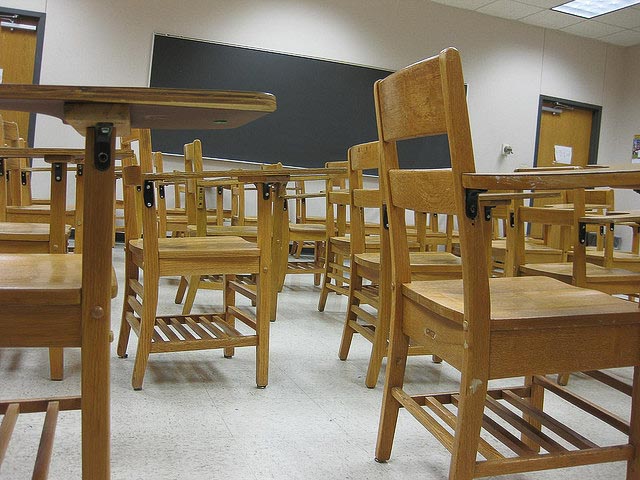Four years ago, the Houston Education Research Consortium launched with a simple goal: to connect research and policy in order to improve education outcomes for students - in particular, the most disadvantaged of them.
I had been producing education research for over a decade, both as a doctoral student and as a professor at prestigious research institutions. Upon getting promoted with tenure - the epitome of academic endeavors - I felt surprisingly dissatisfied and even deflated at the realization that my work had not really had an impact on students' lives. If I was truly honest, I had spent lots of research dollars on publishing journal articles, which were read only by a few other academics, resulting primarily in the advancement of my career. I learned a lot about research methods, but I didn't really contribute toward addressing educational inequality - the reason I got into this line of work in the first place.
So I came to Houston. For many personal and professional reasons, I wanted to return to Texas, and Houston was a particular draw, not only because I'm fond of the weather - I'll take a sauna over frozen nasal hair anytime - but mainly because Rice and the Houston Independent School District wanted to work with me to change the way research is produced and used. Both institutions are committed to improving students' lives, and both are open to making the changes needed to accomplish this.
School districts maintain huge amounts of data, such as students' test scores, demographics, and disciplinary action, while universities have extensive research capacity. Our intention was to create a partnership with the district in which our research agenda would be shaped by their most pressing questions, and our analyses in turn would inform their decision-making. We also wanted to train a new generation of education researchers that could do research in partnership with school districts. The idea was for this to be a long-term partnership, not a short-term, project-based collaboration.
Executing that vision, however, was far from a simple task. The work involved securing external funding, establishing a data sharing agreement, assembling a research team, and compiling, organizing, and managing data on more than 300,000 students and 12,000 teachers and linking their records over time. It also involved creating new systems and processes for bringing together two very different organizations.
But we did it, thanks to the extraordinary efforts of district leaders, especially the district's research department, university leaders, and the research team at Rice. And the work has paid off. To date, we've conducted 9 studies for HISD, and 10 more are in progress. That work has been a valuable resource for the district as it strives to achieve better outcomes for its students.
Today, I'm delighted to announce that thanks to a pair of grants, we now have the financial wherewithal to continue answering questions about how the district can best serve Houston students. Over the next several years, Houston Endowment will provide $1.3 million to HERC, and the Laura & John Arnold Foundation will provide $884,000. Together, these grants represent the largest funding commitment HERC has received.
These grants are crucial because they allow us to conduct research that is relevant, rigorous, timely, and independent - and not funded by vendors or even the district. We work closely with HISD to develop research questions and discuss findings, but analyses are carried out exclusively by Rice researchers.
Because Rice receives no funding from HISD for the HERC program, we can say that our evaluations and conclusions are truly independent. In many communities, that type of research is difficult to come by. Keeping our work independent ensures our findings are viewed as credible and objective.
The new grant funding will enable us to continue our current research pipeline. For example, we're working to identify the strongest indicators that a student is at risk of dropping out of school. We're also analyzing HISD's Secondary Reading Initiative, designed to support struggling readers, to determine whether it's achieving its goals.
The funding will also let us pursue new types of cutting-edge research combining data from HISD with information from other agencies. For example, we know it's possible to link student information with data from the Texas Workforce Commission. Doing so would allow us to explore the connections between K-12 education and employment outcomes. This type of research has been done in very few places, and it's never been done in Houston.
We're also interested in linking HISD data to juvenile justice data. There's a strong connection between education and criminal justice outcomes, both during students' juvenile years and later on as adults. Literacy level, for example, is a strong predictor of someone's likelihood of ending up in prison. We're hoping to take advantage of our access to data in hopes of better understanding the development of young people beyond what's happening directly within the education system.
The possibilities are amazing, and there's so much potential to learn as we develop these new connections. This funding will allow us to launch research of great importance not just to HISD but also to the broader community.
HERC has developed better than I could have imagined. It took a great deal of time and effort to lay the groundwork for the consortium. To be candid, during its early days, I had a lot to learn about the way school districts operate. Thankfully, HISD embraced the partnership and worked closely with us to support HERC's work.
Today, we're hoping to expand HERC's reach by sharing the lessons we've learned with others. In August, we'll host a symposium for similar university-district research partnerships from across the country so we can discuss the best ways to facilitate this burgeoning research model. Together, we're taking education research in a totally new direction, and it's one we believe has vast potential.

